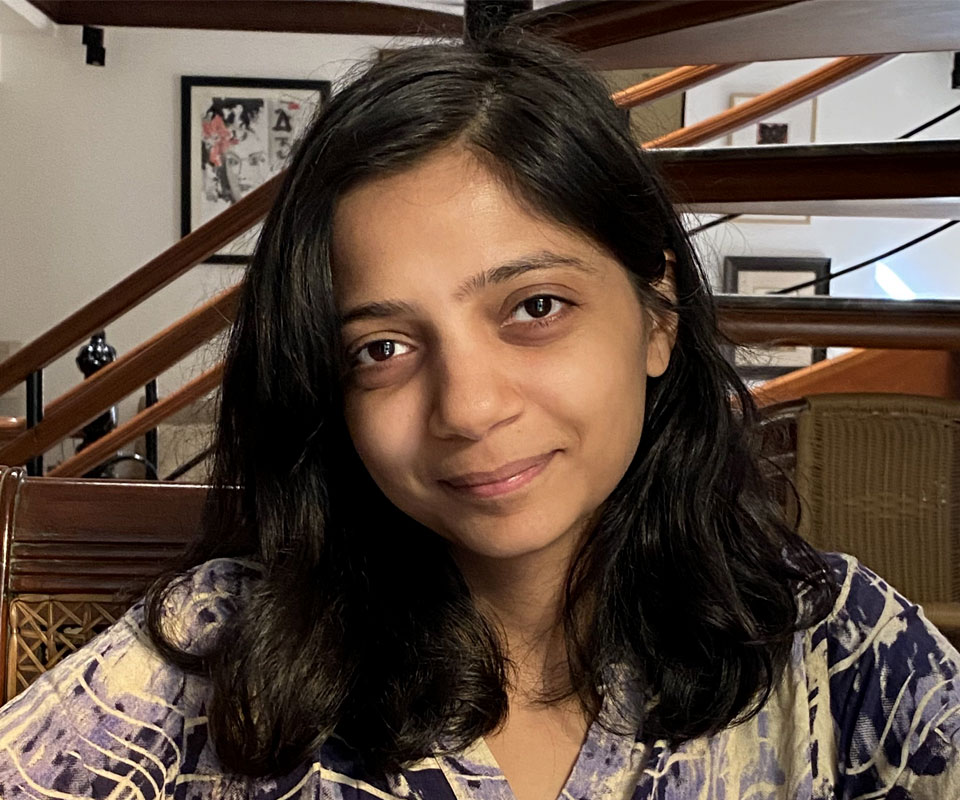Principles of Prediction is two-time Commonwealth Short Story Prize winner Anushka Jasraj’s debut short story collection that will leave you bemused and in awe.
Jasraj unpacks complex human emotions through intimate peeks into her characters’ psyches, revealing deep-seated conflicts, fears, insecurities, and passions. In 13 beautifully spun stories that take you through what seem like fragments of dreams, Jasraj explores love that defies labels and the absurdity of human existence. The stories are unsettling, interspersed with wit and surrealist imagery, and driven by memorable characters like a young woman who falls in love with a lion-tamer, a kelptomaniac-turned-elephant-kidnapper, and a private detective of stolen objects.
In an interview with Helter Skelter, Jasraj speaks about her stories and characters, surrealism, her writing process, and more.

Fiction is often hailed for promoting a deeper understanding of human emotions. You seem to have achieved this brilliantly in your collection of short stories, exploring the human mind in all its tenderness, absurdity, and above all, magnificence. There are also multiple references to human consciousness, psychoanalysis, and Freud. Have you always been interested in the inner workings of the mind? Where does this interest stem from?
I’ve been fascinated by the structure of psychoanalysis for a while and I enjoy reading about the topic. One of the stories in the collection, Westward, was inspired by a travel memoir written by Durgabati Ghose, whose father founded the Indian Psychoanalytical Society. She appears as a footnote in her father’s letters to Freud, so I really wanted to write about her and get more people to discover her memoir.
“People who are strict about heteronormative standards are probably afraid of their own capacity for being a little bit queer.”
Most of your protagonists, like Zena from ‘Entomology’ and Sita from ‘Circus’, fall outside normative narratives when it comes to sexual orientations and romantic interests. They are also distinct, memorable characters with their own quirks, imperfections, and conflicts. Where do you find inspiration for the characters in your stories? Is it important to you that your characters do not subscribe to the heteronormative standards set by society?
I don’t know if Zena or Sita would explicitly identify as ‘not straight’ and I don’t define a character’s orientation unless the narrative calls for it. People who are strict about heteronormative standards are probably afraid of their own capacity for being a little bit queer. I guess you could say the lack of those labels is important to me.
You have spoken about your interest in intimacies that get erased simply because they are not the norm, and how this reflects in ‘Drawing Lessons’. This seems to hold true for your other stories as well, and they come across as snapshots of lives riddled with turbulent love, rarely offering neatly packaged endings. Is this a conscious decision on your part? Do you prefer realistic open endings over syrupy-sweet happy endings for your stories?
The realistic ending can also be the sweet, happy one depending on the character’s perspective. I love stories where things don’t work out, characters don’t get what they wanted or what they expected, but we see an internal change.
“Revision is where the real work happens.”
You appear to have used surrealism to reflect on the absurdity of human existence and the mind. What drove you to use surrealist imagery and ideas in your narratives? Was it done with the intention of unsettling your readers, provoking thought and introspection?
Writing is very intuitive for me, so I didn’t have a focused intention in that manner. Also, surrealism is a very loaded word, which comes with a lot of historical baggage. But maybe one of the uses of surrealism or absurdity is to tell the truth but ‘tell it slant’ as Emily Dickinson would say.
The women in many of the stories seem to share the feeling of being trapped—in marriage, motherhood, and even love. What was the idea or thought process behind this recurrent theme?
That’s a very good observation! It has been pointed out to me by someone else, so I’m more conscious of it now but I hadn’t realised that was a recurrent theme [when I wrote the stories].

You have mentioned in a previous interview that Bombay is your “narrative palace” that you go to when you need to tell a story. Would you still say that Bombay is the emotional and linguistic landscape that your stories are usually situated in?
That is definitely changing. I’ve lived in a couple of different places after that interview, including different parts of Bombay, and experienced it in a new way.
How long did it take for you to come up with the stories that make up Principles of Prediction? Between ‘Drawing Lessons’ and your first book, how do you think your writing process has evolved?
I’ve become much more disciplined. Over the years, I’ve worked with so many teachers and editors and picked up a lot of things from them, which has made me better at editing my own work. I’m definitely of the school of thought that believes revision is where the real work happens.








